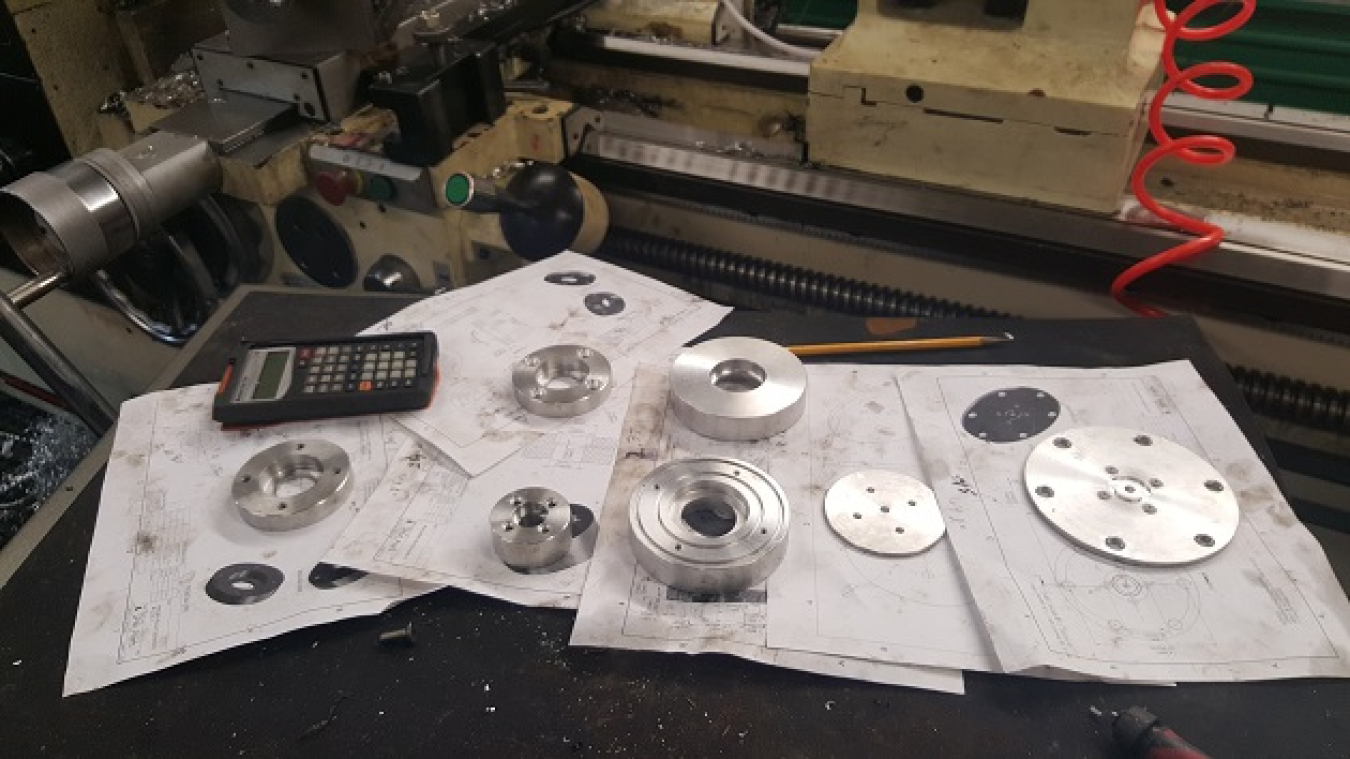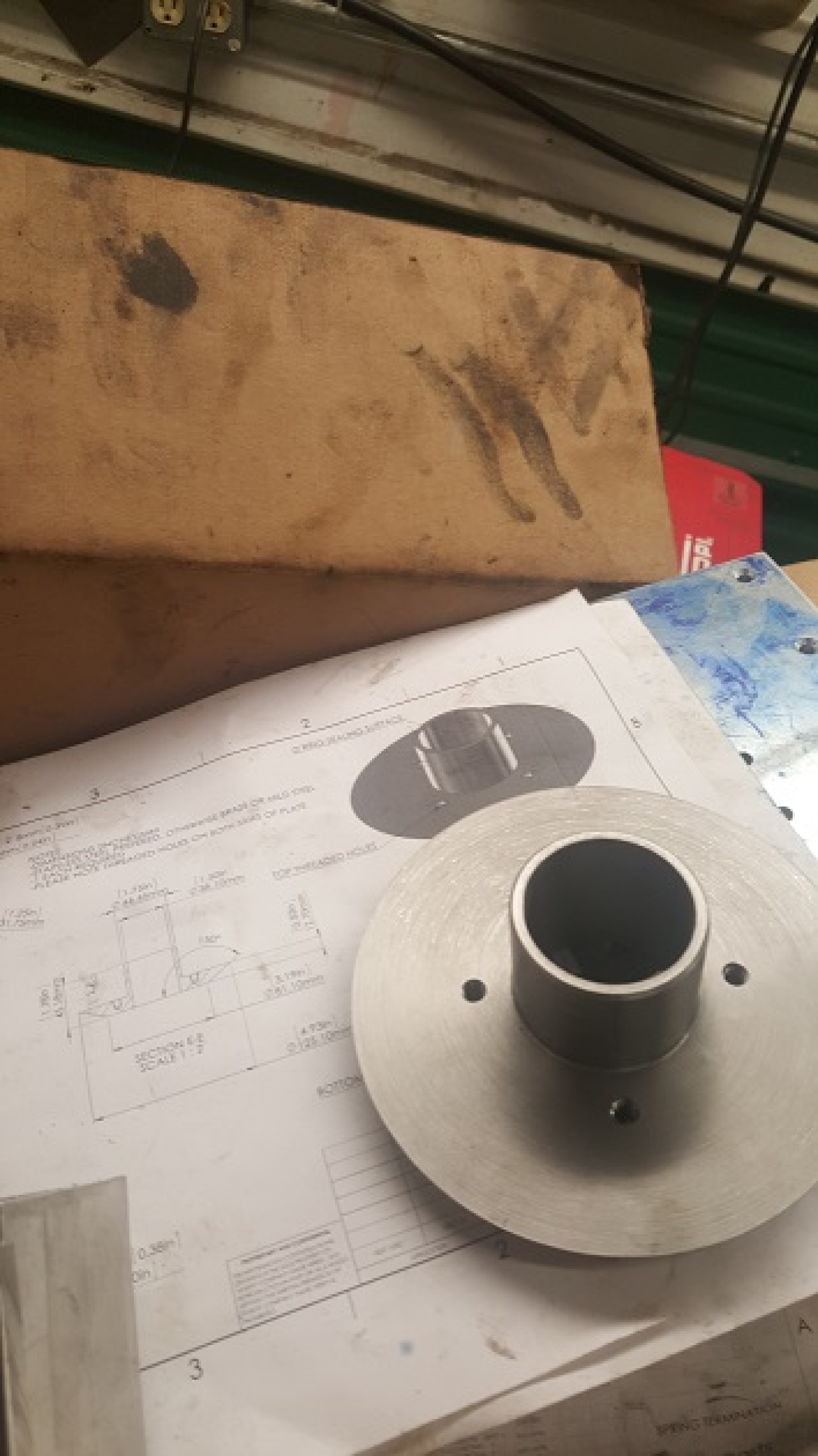What an exciting time for team AquaHarmonics! We are just about wrapped up with the 1/20th scale device design and have all fabrication drawings completed...
Water Power Technologies Office
April 15, 2016What an exciting time for team AquaHarmonics! We are just about wrapped up with the 1/20th scale device design and have all fabrication drawings completed with many parts and pieces completed or in the process of being fabricated. Our longest lead item appeared to be the hull and we went back and forth a bit on the best way to construct it quickly, precisely and make it robust enough to allow changes.
Even surprising to us, we landed on a carbon fiber reinforced plastic hull which fits the bill in all those categories as well as allows easy additions of items and repairs if needed. The other exciting thing about CFRP is making a back up device becomes pretty easy and quick once the molds are made. Our first layer of carbon has been laid up, and many of the custom fabricated components are complete and en-route to us. This means that the hull is now waiting on these parts for completion instead of the other way around! We are targeting the last week of April as a first build date, with bench testing to follow.
Many thanks to everyone who has been providing parts for us and working with our rapid development schedule!
Our suppliers:
- Saddle Point Machine
- Brady Kinetic Curiosities
- FUTEK Sensors
- Miles Fiberglass and Composites Inc.
- Applied Plastics Machining
- Portland Waterjet



What has been the biggest challenge so far?
The biggest challenge for team AquaHarmonics so far has been time. Our focus is primarily the Wave Energy Prize, but the obligations of day to day life, day jobs, etc. tend to come first. This can be quite challenging. We often do the biggest chunks of work between 4AM-7 AM and 8PM-2AM throughout the work week, and then really get some focused hours in over the weekends.
What are you most looking forward to?
Team AquaHarmonics is most looking forward to getting the device in the tank and testing with our revised control as this is the biggest “make or break” point for our device. If it works as intended, it can mean a huge improvement in power absorption which translates to a reduction in payback period. This puts us on the path towards commercial success, and furthering development of the device.

